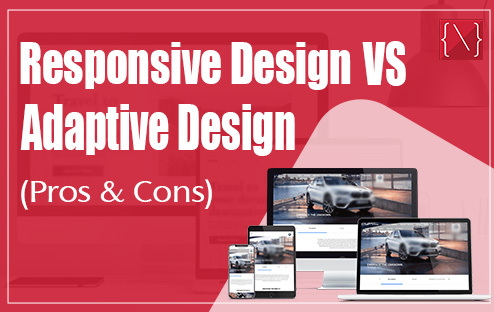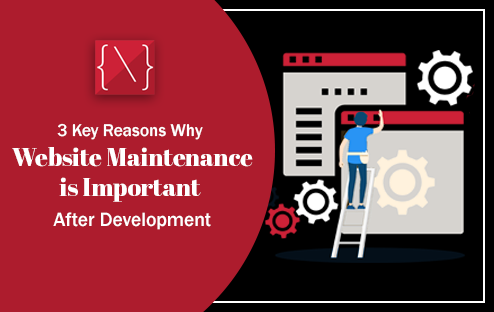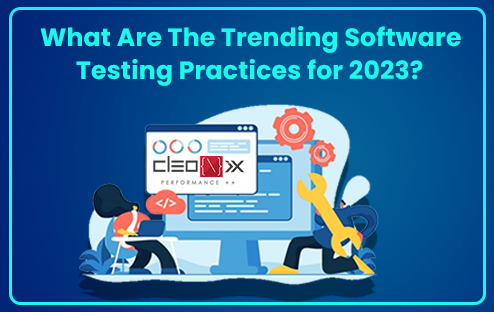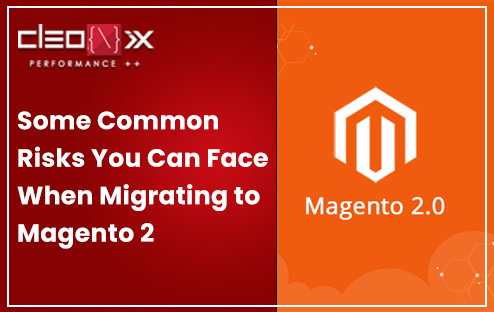
In today’s multi-device world, ensuring your website delivers a seamless experience across desktops, tablets, and smartphones is no longer a luxury, it’s a necessity. This is where responsive design and adaptive design come into play. Both approaches aim to create websites that adapt to different screen sizes, but they achieve this in fundamentally different ways. Choosing the right approach for your website depends on your specific needs, target audience, and budget. Let’s go deeper into the pros and cons of each method to help you make an informed decision.
Responsive Design: Fluid and Flexible
Responsive design is the current industry standard. It utilizes a single website layout that adjusts and reflows based on the user’s screen size. This is achieved through the use of CSS media queries, which are essentially sets of rules that dictate how the website elements should behave at different screen widths.
Pros of Responsive Design:–
- Reduced Development and Maintenance Costs: You only need to build and maintain one website, making it a more cost-effective solution.
- Flexibility: Responsive layouts can adapt to an infinite number of screen sizes, future-proofing your website for new devices and resolutions.
- Search Engine Optimization (SEO) Friendly: Search engines like Google favor mobile-friendly websites, and responsive design inherently delivers a good mobile experience.
- Consistent User Experience: Users will encounter the same branding and content across all devices, fostering a sense of familiarity and trust.
Cons of Responsive Design:–
- Potentially Less Control Over User Experience: Since the layout adapts automatically, you might have less granular control over how elements appear on specific devices.
- Complexity for Complex Layouts: Websites with intricate layouts or heavy use of multimedia might require more development effort to ensure a smooth responsive experience.
Adaptive Design: Tailored Experiences
Adaptive design, on the other hand, utilizes multiple pre-defined layouts optimized for specific device groups (e.g., desktops, tablets, mobiles). When a user accesses the website, their device is detected, and the most suitable layout is served.
Pros of Adaptive Design:–
- Highly Optimized User Experience: With dedicated layouts for different devices, you can create a highly tailored experience for each user group, potentially leading to better engagement.
- Faster Loading Times: Since users only receive the layout designed for their device, there’s less content to load, potentially improving website speed.
- Ideal for Complex Layouts: Websites with rich media or intricate layouts might benefit from the more structured approach of adaptive design.
Cons of Adaptive Design:–
- Increased Development and Maintenance Costs: Building and maintaining multiple layouts requires more time and resources.
- Limited Scalability: New device sizes or resolutions might require creating entirely new layouts to accommodate them.
- Potential for Inconsistent User Experience: The user experience can vary depending on the device used, which might be jarring for some users.
Choosing Between Responsive and Adaptive Design
So, which approach is right for you? Here are some factors to consider:
- Website Complexity: For simpler websites with straightforward layouts, responsive design is a great choice. For complex websites with rich media, adaptive design might offer advantages.
- Target Audience: If your target audience primarily uses desktops, responsive design might suffice. If your audience heavily relies on mobile devices, adaptive design might be worth considering.
- Budget: Responsive design is generally more cost-effective due to the need to maintain only one website.
- Future-Proofing: Responsive design is more adaptable to future screen sizes and devices.
Ultimately, the best approach depends on your specific needs and priorities. Consider your budget, target audience, and website complexity to make an informed decision.
Conclusion
Both responsive design and adaptive website design have their merits and drawbacks. By understanding the strengths and weaknesses of each approach, you can choose the method that best serves your website’s needs and delivers an optimal user experience across all devices. If you’re still unsure, consulting with a web design professional can help you make the best choice for your unique situation.
ALSO READ: Web 2.0 vs Web 3.0- Know The Differences & Similarities

In today’s fast-paced digital landscape, having a website is no longer an option; it’s a necessity. Whether you’re a small business owner, a blogger, or a large corporation, a well-maintained website is crucial for success. While many invest significant time and resources in the initial development phase, it’s equally important to understand the significance of ongoing website maintenance.
Here are three key reasons why website maintenance should be a priority after the web development phase:
1. Security Concerns:
One of the most critical reasons to prioritize website maintenance is security. The internet is rife with cyber threats, and without proper maintenance, your website becomes vulnerable to attacks. Outdated software, plugins, and themes are common targets for hackers.
Regular updates to your website’s content management system (CMS), plugins, and themes are essential to patch vulnerabilities and protect against potential breaches. Additionally, implementing security measures like firewalls and SSL certificates can further safeguard your site and the sensitive information of your visitors.
By keeping your website up-to-date and secure, you not only protect your own interests but also establish trust with your audience. When visitors know they can browse your site safely, they are more likely to engage, convert, and return.
2. Optimal User Experience:
User experience (UX) is a critical factor in the success of any website. A well-maintained site ensures that visitors can navigate easily, find information quickly, and have a seamless browsing experience across different devices.
Over time, broken links, outdated content, and slow-loading pages can significantly impact user satisfaction. By conducting regular checks and updates, you can identify and rectify these issues before they negatively impact your audience.
Furthermore, website maintenance allows for the implementation of responsive design practices. With the increasing use of mobile devices for internet browsing, ensuring that your site is mobile-friendly is paramount. A well-maintained website adapts to different screen sizes and resolutions, providing an optimal experience for all users.
3. Search Engine Optimization (SEO) Benefits:
Search engines like Google and Bing continually update their algorithms to provide the best results to users. To maintain or improve your search rankings, it’s crucial to stay current with these changes.
Website maintenance includes tasks such as updating meta tags, optimizing images, and ensuring that your content is relevant and up-to-date. Regularly auditing and improving your website’s SEO not only helps in maintaining your current rankings but also positions your site for higher visibility in search results.
Additionally, a well-maintained website tends to load faster, which is a known factor in search engine rankings. By optimizing images, minimizing code, and utilizing caching techniques, you can improve your site’s performance and increase its chances of ranking higher in search results.
In conclusion, website maintenance is not an optional task but a crucial part of managing a successful online presence. By prioritizing security, ensuring optimal user experience, and reaping the benefits of SEO, you’re not only safeguarding your website but also setting the stage for growth and success in the digital realm.
Remember, a website is a dynamic entity that requires ongoing care and attention. By investing in maintenance, you’re investing in the long-term success and effectiveness of your online presence.
ALSO READ: Tips to Improve Your Website User Experience

Cascading Style Sheets (CSS) is the backbone of web design, enabling developers to transform static HTML into visually stunning and interactive web pages. While most developers are familiar with the basics of CSS, there’s a world of advanced techniques and lesser-known tricks that can take your designs to the next level. In this article, we’ll delve into the top 10 best CSS tricks you probably haven’t used before. These techniques will not only enhance the aesthetics of your websites but also improve user experience and streamline your coding process.
1. Custom Underlines and Overlines
You might think underlines and overlines are plain and uninteresting, but CSS allows you to get creative with them. By using the text-decoration property and combining it with pseudo-elements like ::before and ::after, you can craft custom underlines and overlines that incorporate animations, gradients, and even icons.
cssCopy codea.custom-link {
position: relative;
text-decoration: none;
}
a.custom-link::before {
content: "";
position: absolute;
bottom: -2px;
left: 0;
width: 100%;
height: 2px;
background: linear-gradient(to right, #FF5733, #FFD700);
transform: scaleX(0);
transform-origin: left;
transition: transform 0.3s ease-in-out;
}
a.custom-link:hover::before {
transform: scaleX(1);
}
2. Smooth Scrolling with Scroll Behavior
Smooth scrolling adds a touch of elegance to your website by allowing users to glide between different sections instead of abruptly jumping. The scroll-behavior property can be set to smooth to achieve this effect globally on anchor links.
cssCopy codehtml {
scroll-behavior: smooth;
}
3. The “Clamp” Function for Responsive Typography
The clamp function in CSS is a game-changer for responsive typography. It lets you set a range of values for font size, allowing the browser to choose the appropriate font size based on the screen size.
cssCopy codeh1 {
font-size: clamp(2rem, 6vw, 4rem);
}
4. Creative Image Borders
Move beyond simple rectangular image borders. With the border-image property, you can apply intricate patterns, gradients, or even images as borders for your elements.
cssCopy code.img-border {
border: 10px solid transparent;
border-image: url('border.png') 30 round;
}
5. The “will-change” Property
Optimize the performance of your animations by using the will-change property. This informs the browser about upcoming changes, allowing it to allocate resources more efficiently.
cssCopy code.element-to-animate {
will-change: transform, opacity;
/* Your animation properties here */
}
6. Styling Broken Images
Instead of showing the default browser icon for broken images, you can use CSS to create a more user-friendly experience.
cssCopy codeimg {
content: url('fallback-image.png');
}
img:broken {
display: none;
}
7. Gradient Borders
Gradient borders add a touch of sophistication to your elements. By combining gradients and border properties, you can create stunning effects.
cssCopy code.gradient-border {
border: 2px solid transparent;
background-clip: padding-box;
border-image: linear-gradient(to right, #FF5733, #FFD700) 1;
}
8. CSS Grid for Equal Height Columns
Creating equal height columns can be challenging, but CSS Grid makes it remarkably simple.
cssCopy code.container {
display: grid;
grid-template-columns: repeat(auto-fill, minmax(250px, 1fr));
grid-gap: 20px;
}
9. Custom Checkboxes and Radio Buttons
Redefine the appearance of checkboxes and radio buttons to match your website’s design using CSS.
cssCopy codeinput[type="checkbox"],
input[type="radio"] {
display: none;
}
input[type="checkbox"] + label,
input[type="radio"] + label {
/* Your custom styling here */
}
10. Variable Fonts for Performance
Variable fonts are a single font file that contains multiple variations. They offer greater flexibility in terms of font weight, style, and width, all while improving performance by reducing the number of font files.
cssCopy code@font-face {
font-family: 'MyVariableFont';
src: url('my-variable-font.woff2') format('woff2-variations');
font-weight: 1 1000;
font-stretch: 50% 200%;
}
In conclusion, these top 10 CSS tricks introduce you to innovative ways to enhance your web design projects. By mastering these techniques, you’ll be able to create unique and engaging user experiences that stand out in the digital landscape. Experiment with these tricks, mix and match them, and let your creativity shine through your code. Your websites will thank you for it!
ALSO READ: AngularJS or ReactJS -Which One is Best for 2023?

In today’s digital age, businesses are constantly seeking ways to stay ahead of the competition and deliver exceptional online experiences to their customers. One of the most crucial aspects of achieving this goal is investing in the right web development framework. Laravel, an open-source PHP framework, has gained immense popularity among developers worldwide due to its elegance, simplicity, and extensive features. In this blog post, we will delve into the reasons why Laravel development is an excellent investment for businesses looking to build robust, scalable, and high-performing web applications.
- Modern and Elegant Syntax:
Laravel boasts a clean and expressive syntax that simplifies the development process and enhances the readability of the codebase. With Laravel, developers can build applications faster and more efficiently, reducing development time and costs. The framework follows the MVC (Model-View-Controller) pattern, promoting a separation of concerns and making the codebase easier to manage and maintain.
- Comprehensive Documentation and Large Community:
Laravel’s documentation is one of its strongest assets. It provides in-depth explanations, tutorials, and examples, enabling developers to quickly grasp the concepts and get started with the framework. Moreover, Laravel has a large and active community of developers who contribute to its growth. The community offers support, shares knowledge, and provides ready-to-use packages, saving developers valuable time and effort.
- Robust Security Features:
Security is a critical aspect of any web application, and Laravel takes it seriously. The framework implements various security measures such as password hashing, SQL injection prevention, and cross-site scripting (XSS) protection out of the box. Laravel also provides a simple and intuitive way to handle authentication and authorization, making it easier for developers to protect their applications from common security vulnerabilities.
- Blade Templating Engine:
Laravel’s Blade templating engine simplifies the process of building dynamic and reusable views. It offers an intuitive syntax with features like template inheritance, sections, and components. Blade templates are compiled into plain PHP code, resulting in fast rendering times. Additionally, Blade provides powerful control structures and conditional statements, enabling developers to create complex UI components with ease.
- Database Migration and ORM:
Laravel includes a robust database migration system that allows developers to define and manage database schemas using PHP code. This feature makes it effortless to create and modify database tables, indexes, and relationships, ensuring smooth database transitions across different environments. Furthermore, Laravel’s ORM (Object-Relational Mapping) called Eloquent provides a simple and elegant syntax for interacting with databases, making database queries more readable and maintainable.
- Caching and Performance Optimization:
Performance plays a crucial role in delivering a seamless user experience. Laravel offers various caching mechanisms, including in-memory caching, database caching, and Redis caching. These caching options significantly improve application speed and reduce server load. Additionally, Laravel’s support for queueing and task scheduling helps optimize performance by handling time-consuming tasks asynchronously.
- Integrated Testing and Debugging:
Laravel simplifies the testing process by providing a robust testing framework. It includes various testing helpers, assertion methods, and an expressive syntax for writing tests. With Laravel’s built-in testing capabilities, developers can easily write unit tests, integration tests, and acceptance tests to ensure that their application functions correctly and maintains stability. Additionally, Laravel’s detailed error reporting and debugging tools facilitate identifying and resolving issues efficiently.
- Seamless Integration with Third-Party Services:
Modern web applications often require integration with third-party services such as payment gateways, cloud storage providers, and social media platforms. Laravel makes integrating these services a breeze with its extensive collection of pre-built APIs and packages. Whether it’s handling payments, sending emails, or interacting with popular APIs like Stripe or Amazon S3, Laravel provides well-documented and easy-to-use libraries that simplify the integration process.
Conclusion
Investing in Laravel development brings numerous benefits to businesses of all sizes. From its modern syntax and comprehensive documentation to its robust security features and seamless integration capabilities, Laravel empowers developers to create powerful, scalable, and secure web applications. By leveraging the framework’s features, businesses can streamline their development processes, enhance application performance, and deliver exceptional digital experiences to their customers. Whether you’re building a small business website or a complex enterprise application, Laravel is a solid investment that can propel your web development efforts to new heights.
ALSO READ: Shopify or Magento Which One to Choose For Your eCommerce Development

In the ever-evolving world of software development, staying up to date with the latest testing practices is crucial for ensuring the delivery of high-quality software products. As we delve into 2023, several emerging trends have caught the attention of software testers and quality assurance professionals. This blog post explores the cutting-edge software testing practices that are trending this year, offering insights into how they are reshaping the landscape of software testing and positively impacting the software development process.
- Test Automation with Artificial Intelligence: Artificial Intelligence (AI) and machine learning (ML) have gained significant traction in recent years, and their integration into software testing is becoming more prevalent in 2023. Test automation tools powered by AI and ML can analyze vast amounts of test data, identify patterns, and generate intelligent suggestions for improving test coverage and efficiency. These advanced technologies enable the creation of robust test suites, accelerating the testing process and enhancing the overall quality of software products.
- Shift-Left and Shift-Right Testing: The concepts of shift-left and shift-right testing have gained prominence as organizations strive to adopt agile and DevOps methodologies. Shift-left testing involves early involvement of testers in the software development lifecycle, allowing for the identification and resolution of defects at an earlier stage. Conversely, shift-right testing focuses on monitoring and testing in production environments to capture real-time user feedback and improve the product continuously. The combination of both approaches ensures better collaboration between development and testing teams and promotes a culture of continuous improvement.
- Performance Engineering and Testing: With the increasing complexity of software systems and the demand for optimal performance, performance engineering and testing have become crucial in 2023. Performance engineers collaborate closely with development and testing teams to identify potential bottlenecks, conduct load testing, and optimize system performance. Leveraging advanced tools and techniques, performance testing helps organizations assess their software’s scalability, responsiveness, and stability under various conditions, ensuring a seamless user experience.
- Shift towards Cloud-Based Testing: The widespread adoption of cloud technologies has transformed software testing practices. In 2023, there is a significant shift towards cloud-based testing solutions that offer scalability, flexibility, and cost-effectiveness. Cloud-based testing environments provide on-demand access to a wide range of devices, platforms, and configurations, allowing testers to validate software compatibility across diverse environments. Additionally, the cloud facilitates collaborative testing efforts, enabling distributed teams to work seamlessly and share resources.
- Security Testing for Enhanced Protection: As the number of cyber threats continues to rise, security testing has gained paramount importance in 2023. Organizations are increasingly focusing on identifying vulnerabilities, assessing risks, and conducting penetration testing to ensure robust security measures in their software applications. Advanced security testing tools and methodologies are employed to uncover potential security flaws, including injection attacks, cross-site scripting (XSS), and insecure authentication. Prioritizing security testing helps organizations build trustworthy and resilient software products.
- Test Data Management and Privacy: In an era where data privacy is of utmost concern, test data management has emerged as a significant practice in 2023. Testers are now tasked with ensuring the ethical use of data and complying with privacy regulations such as the General Data Protection Regulation (GDPR) and the California Consumer Privacy Act (CCPA). Robust data masking techniques, anonymization, and synthetic data generation methods are employed to protect sensitive customer information during testing while maintaining data integrity.
- Continuous Integration and Continuous Testing: Continuous integration (CI) and continuous testing (CT) have become integral parts of the software development process. In 2023, organizations strive to achieve faster release cycles without compromising quality. CI involves frequent code integration and automated build verification, ensuring that the software remains stable throughout the development lifecycle. Continuous testing complements CI by automating the execution of tests and providing real-time feedback on the quality of the software. This seamless integration of CI and CT allows for early bug detection, faster bug fixing, and overall improved software quality.
Conclusion:
In 2023, the field of software testing is witnessing exciting trends that are shaping the way organizations approach quality assurance. From AI-powered automation and shift-left testing to cloud-based testing and security measures, these practices are revolutionizing the software development process. With a focus on continuous integration and continuous testing, organizations can achieve faster release cycles without compromising on quality. By staying abreast of these trending practices, software testers and quality assurance professionals can contribute to delivering high-quality software products that meet the ever-growing demands of users and maintain a competitive edge in the market.
ALSO READ: AngularJS or ReactJS -Which One is Best for 2023?

Magento 2 is a popular eCommerce platform that offers businesses the ability to manage their online stores with ease. However, migrating to Magento 2 can be a daunting task, and there are many potential risks that businesses should be aware of before undertaking the migration process. In this blog post, we will discuss some common risks you can face when migrating to Magento 2 and provide some tips on how to mitigate them.
Data Loss
One of the most significant risks when migrating to Magento 2 is data loss. During the migration process, data can be lost due to various reasons, such as improper data mapping or incorrect data formatting. To mitigate this risk, it is essential to back up your data before starting the migration process. You should also perform a thorough data audit to identify any potential data issues and work to resolve them before the migration begins.
Downtime
Another common risk when migrating to Magento 2 is downtime. Downtime can occur when your website is unavailable due to maintenance or other issues, which can lead to a loss of revenue and damage to your brand reputation. To avoid downtime, you should plan your migration carefully and schedule it during a time when your website has the least traffic. Additionally, it is essential to work with experienced developers who can minimize downtime and ensure a smooth migration.
Extension Incompatibility
Magento 2 has a different architecture than Magento 1, and as a result, extensions that worked on Magento 1 may not be compatible with Magento 2. This can cause problems during the migration process, such as functionality loss or website crashes. To mitigate this risk, it is essential to identify all the extensions you are currently using and ensure that they are compatible with Magento 2. You may also need to find alternative extensions that are compatible with Magento 2 to replace any that are not.
Customization Issues
Another risk when migrating to Magento 2 is customization issues. If you have customized your website extensively, you may encounter issues during the migration process. Customizations that are not properly migrated can lead to website crashes, functionality loss, and other issues. To mitigate this risk, it is essential to thoroughly document all your customizations and work with experienced developers who can ensure that your customizations are properly migrated to Magento 2.
Cost Overruns
Migrating to Magento 2 can be costly, and there is a risk of cost overruns. This can happen due to unexpected issues during the migration process or changes in the scope of the project. To mitigate this risk, it is essential to create a detailed migration plan and budget that includes all the necessary resources and potential costs. You should also work with experienced developers who can help you identify potential cost overruns and find ways to minimize them.
SEO Issues
SEO is critical for any eCommerce website, and there is a risk of SEO issues when migrating to Magento 2. If not properly managed, the migration process can result in a loss of SEO ranking, which can lead to a significant decrease in traffic and revenue. To mitigate this risk, it is essential to work with experienced developers who can ensure that all your SEO settings are properly migrated to Magento 2. You should also perform a thorough SEO audit after the migration to identify and resolve any potential issues.
Training Issues
Migrating to Magento 2 can be a significant change for your team, and there is a risk of training issues. If your team is not properly trained on Magento 2, they may struggle to use the platform effectively, which can lead to a loss of productivity and revenue. To mitigate this risk, it is essential to provide your team with comprehensive training on Magento 2 before and after the migration. You should also work with experienced developers who can provide guidance and support during the training process.
In conclusion, migrating to Magento 2 can be a complex process, and there are several risks involved. However, with careful planning and the help of experienced developers, businesses can mitigate these risks and ensure a successful migration. It is essential to perform a thorough data audit, identify potential issues, and create a detailed migration plan and budget that includes all the necessary resources and potential costs. Working with experienced developers who can minimize downtime, ensure proper data migration, and provide comprehensive training for your team is also crucial. By taking these steps, businesses can make the transition to Magento 2 with confidence and avoid the potential risks that come with the migration process.
READ ALSO: Tips to Optimize Magento Cart Page for Better Conversion Rate

The online shopping market is growing at an exponential rate. Especially over 2 billion people have shopped online during the pandemic period. In fact, eCommerce stores have crossed 4.7 billion sales worldwide. The prime factor behind this exponential rise has to be the lockdown impositions in various countries. So, if you enter this eCommerce platform and hit the hot iron, congratulations; You have made the right choice.
But in order to achieve success, your company will need a robust platform to sell its goods and services. Magento and Shopify are two of the best in the market for creating eCommerce websites. Each of them provides us with various features and functionalities that cater to a specific type of business. Therefore, in this blog, we will discuss everything you need to know about Shopify and Magento. This will provide you with the proper insight regarding which one to choose for your eCommerce development.
Magento Vs. Shopify: What Are They?
Introduced in 2008, Magento is an open-source highly customizable eCommerce platform. It works like a Content Management System (CMS) and shopping cart platform. The users can create customizable eCommerce websites based on their business preferences and choice.
Shopify is also an eCommerce platform founded in 2006 by Scott Lake, Daniel Wienand, and Tobias Lutke. It allows users to create powerful eCommerce websites that will help to acquire more customers. So, with Shopify, your company can generate more sales and you can manage your daily activities much more efficiently.
The Main Difference Between Shopify & Magento
Ease Of Use
This has to be the first criteria when you decide to choose an eCommerce platform. Without the ease of use, your business can face a lot of issues regarding technicality and flexibility. From creating a website to managing and maintaining it, an easy to use website can save you time and effort. Most importantly, ease of use can directly impact your website’s performance and sales figures.
Magento: The ease of use curve with Magento is quite steep to start your eCommerce journey. Yes, the interface is clean and responsive. But to design a powerful website, you need to have coding knowledge for management and store creation.
Shopify: When compared to Magento, Shopify is much easier to use. You don’t need to have any expert knowledge to create an eCommerce website, manage, and maintain it. The user interface provides the user with a functionality called “drag-and-drop”, which makes the creation process much easier.
Final Words
Selecting the right eCommerce platform is extremely important for the success of your online business. However, between Shopify and Magento, the main difference comes down to ease of use. If you are someone who can afford to hire a developer to do the website designing process, go for Magento. Otherwise, Shopify is the best option available for you in the current market.
Also Read: Business benefits of Laravel development services

Introduction
In this growing digital world, you can easily miss out on the opportunity created by the new technology in the market. The situation can get even worse when businesses don’t have the required expertise for tapping these changes. Well, this can be the case for every organization that doesn’t have enough knowledge about web designing and development.
With the introduction of web development, the whole structure and operations of the business industry have changed drastically. So, for every aspiring businessman who wants to know about web development and design, this blog is for you. Here, we will discuss how web design and development can amplify your business. Let’s go.
Benefits Of Web Design and Development
Easy Navigation :-
The users must experience easy navigation with the help of a successful online platform. See, the thumb rule is that the information on your website should be easily accessible. For this, your website should fast load speed. Remember, easy navigation guarantees organic traffic.
SEO :-
Search Engine Optimization (SEO) is perhaps the most important aspect of your website. See, millions of websites are fighting with each other to reach the top position among the search results. So, if your website is SEO-friendly, it will reach the relevant search results. As a result, you will attract customers and generate sales.
Attractive Visual Content :-
Selling your products and services in the digital world is not an easy job. It can get more complicated if the company chooses to provide only text to describe its products. See, most customers don’t have the patience to read 300 words of the product description. They will simply leave your site. So, use images to convey information about the company and its services.
Increasing The Sales Figure :-
The success of any business is directly related to the sales figure. Well, web design and development can generate sales for your company. Since the pandemic, the growth in the eCommerce industry has been substantial. In fact, numerous customers only prefer online shopping for the sake of social distancing.
Attracts New Customers :-
One of the primary objectives of any business is to attract and reach new customers. Well, there are numerous methods to achieve success over this. But one of the most celebrated and proven methods is web designing. It opens the door to the entire digital world. In this case, you can literally say that sky is the limit.
User Engagement :-
There was a time when the business structure was based around brick and mortar. But not anymore, the times have changed with services becoming digital. This is one of the prime reasons that most organizations want to develop interactive websites. It will help them to increase user engagement and develop their online presence.
Marketing & Advertising :-
For any startup, making your presence known in this digital world is a success in itself. Websites can help you increase your market presence. So, customers will know about your products and services. Of course, marketing and promotions also play a vital role. But without having a website, digital marketing is basically of no use.
Lifetime Customers :-
As your company grows and expands its horizon, it is very important to have a loyal customer base. But developing a loyal client base is not an easy job. The situation can get worse if the company policy and tactics are bad. However, in such cases, web designing can help you out. Through your website, you can identify loyal customers and create an effective strategy to retain them.
Brand Creation :-
Nowadays, the success rate of any business entirely depends on how well it can establish its brand in the digital world. You don’t believe me? Well, just do a bit of research and you will exactly know what I am talking about. With an interactive and engaging website, you can reach new customers and develop an online presence and brand.
Conclusion
For any business, it is extremely important to know how web design and development can affect their success. Remember, without having a proper website, it is almost impossible to establish your business. So, take note of the above points and work accordingly. Good Luck.
Also Read:- The Role of Digital Marketing in Business Development
About the author
Cleonix Technologies
A professional Web Development Company is highly focused on providing world class and best in the industry standard services in every domain that we work upon.

 AJ 14, Salt Lake, Sector 2, Kolkata - 700091 |
AJ 14, Salt Lake, Sector 2, Kolkata - 700091 |  743 Virginia Ave NE Atlanta, GA 30306
743 Virginia Ave NE Atlanta, GA 30306








